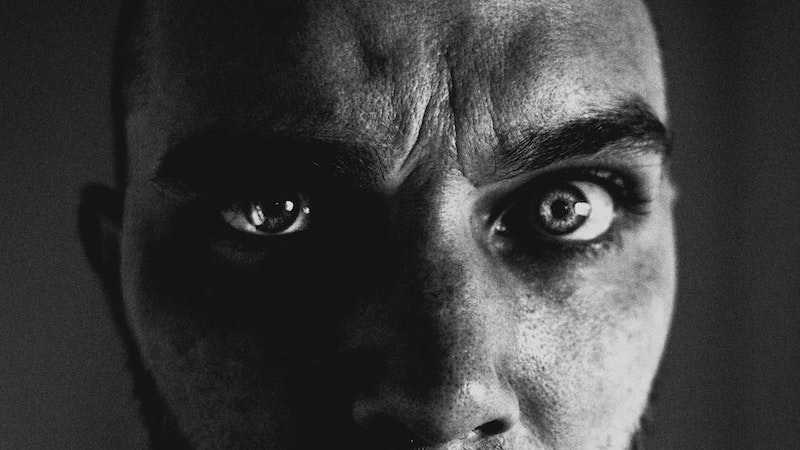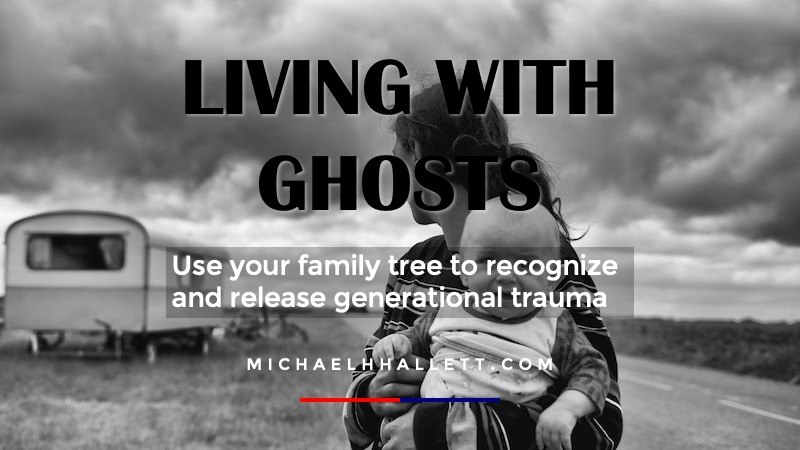The eyes in old photographs reveal family trauma
- 9 September 2022
- Posted by: Michael H Hallett
- Category: Generational trauma ,

When it comes to generational trauma, photographs are interesting beasties. They are sometimes the only link we have with an old family member. Through both their presence and their absence, photographs cast light on the past. One of the ways is through the light—or lack of it—in the subjects’ eyes.
Absent photographs
How can the absence of photographs reveal anything?
In her family memoir The Scarlet Sisters, Helen Batten writes: “The number of wedding photos that survive are in direct proportion to how popular the marriages were with the family.”
It makes perfect sense. Nobody wants to be photographed at a disapproved wedding—unless they are hell-bent on being the black sheep of the family.
Of course, photographs are more revealing than non-existent photographs.
Particularly, photographs of our nearest family members.
Their eyes speak directly to us. Their traumas mirror ours.
The eyes have it
Here’s an exercise for flushing out generational trauma in your family—i.e., in you.
See if you can obtain photographs of all your nearest relatives. If possible, go for close-ups where the subject stares directly into the camera. The eyeline is more important than the distance. Pick photographs with direct eyelines over close-ups, it that’s your choice.
If you can, use the actual antique photograph. Those fantastic old sienna-tinted ones.
If not, print out a digital copy. You can do this exercise using an image on a screen, but generational trauma is very tactile. The closer you can get to it, in every sense, helps to access whatever is buried in your family’s skeleton closets.
Flushing out family trauma is like Formula 1. Every fraction of a second counts. (I’m keeping an eye on Free Practice 1 at Monza on my mobile as I write this.)
Take some time out. Fill a glass of water. Find a quiet spot. Put your phone away. (Do as I say, not as I do!)
Rogues’ gallery
Sit with this rogues’ gallery of photographs. (I’m sure they’re not actually rogues. Well, maybe. My great-grandfather was convicted of tax fraud in 1922.)
Take each photograph, one by one.
Sit with it. Can you stare straight into the eyes of its subject?
Can you hold that gaze… for a minute at least?
Notice the slightest flicker of resistance in your own eyes.
Look out for a tendency, however slight, to look away, to put down the photograph, to go and do something else.
That resistance reveals something buried. Something painful. Traumatic.
The gateway
That minute hint of resistance is the gateway to the vastness of your unconscious.
Because the trauma you see in their eyes is a reflection. It’s the trauma in your eyes. In your psyche. Your unconscious.
Sit with the photo. Breathe. The resistance may flicker for a fraction then disappear. Look again. You may not feel it a second time. But you know it’s there. It’ll surface, eventually.
Or the resistance may become more obvious the longer you look. That tells you it’s closer to the surface. Ready to pop. Sit. Breathe. Let it come.
Once something has popped, stop the exercise. Work with whatever has come up. You can come back to the other photographs later.
Practice self-care when something surfaces. Rest. Drink water. Swim or walk in nature. Nurture your body as it releases whatever it’s ready to release. Expect to visit the bathroom more often than usual.
Be aware that if nothing surfaces, that doesn’t mean there’s nothing there. It may indicate nothing’s ready to let go right now. Give it a year or two. Come back and try again. Clearing trauma is a slow, repetitive process.
I learned this trick from noticing that I couldn’t hold the gaze of my grandfather, a war hero from World War I. By noticing my resistance, I unlocked a whole Pandora’s box of feelings of not measuring up.
Who knows what you’ll find in your family’s eyes?
ONLINE COURSE

Photo by Derek Story on Unsplash
